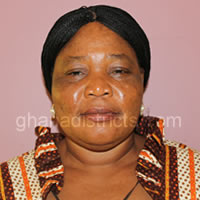Location and Size
The District is situated in the central part of Brong Ahafo Region and covers an area of 389.4km2.. . The District lies between longitudes 1°49´ East and 2°30´ West and latitude 8°00´ North and 7°35´ South. It shares political and administrative boundaries with the Techiman Municipality in the South, Wenchi Municipality in the North-west, Kintampo South District in the North and Nkoranza North District in the North-east.
Climate
The District experiences both semi-equatorial and tropical conventional or savannah climates, marked by moderate to heavy rainfall. Major rains start from April to July and the minor from September to October with mean annual rainfall ranging between 1660mm and 1260mm. The only dry season, which is highly pronounced in the Savannah zone, starts in November and lasts until March. The average highest monthly temperature is about 300C (860F) and occurs mostly between March and April with the lowest of about 200C (680F) occurring in August. Relative humidity is generally high throughout the year.
Relief and Drainage
The topography of the District is generally low lying and gently undulating. The main relief features are highlands and lowlands with part of the District around Buoyem reaching a height of 579m. The lowest point of about 305m is found around Krobo in the south-western part. Major rivers that drain the District includes the Tano River to the south, Subin and Kar rivers to the North. The potential of these rivers and streams notably Tano and Subin as resource for small scale irrigation is yet to be fully harnessed.
Vegetation
There are three main vegetation zones namely; the Guinea-savannah woodland, located in the North-west, the Semi-deciduous zone in the South and the Transitional zone which stretches from the South-east and West up to the North of the District. The Semi-deciduous forest type, like the other vegetation zones, has largely been disturbed by man’s activities such as charcoal burning and logging depriving the district of its valuable tree species and other forest products.
However, about 50km2 of this forest type has been put under teak plantation. The Asubingya forest reserve located at the North-west covers an area of about 32.5km2 (about 9.8 percent of District’s total land area). There are other Teak plantations dotted in the District and notable among them is the Tanoboase teak plantation. The teak plantations serve as a source of raw material for the local timber industry as well as for export. These important resources which also serve as protective cover to the soil and some of the major rivers are under threat from encroachers and need to be protected.
Soils and land use
The major soil type associated with the Techiman North District is the Damango-Murugu-Tanoso. The Damango series are developed from voltaian sandstone under savannah vegetation and are red, deep (over 200cm), well drained and permeable. Crops such as yam, cassava, maize, tobacco, vegetables, legumes, and cotton thrive very well on Damango series. They can be found in the southern part around Tuobodom, Tanoboase, Offuman and Mesidan. The Murugu series can be found in the Transitional Zone stretching to the north eastern part of the District.
The Tanoso series are located in low slopes and valley bottoms in the savannah zone at the northwest around Aworowa and Offuman where River Subin drains. They are deep, poorly drained and subject to seasonal water logging. These series support tomatoes and other vegetable cultivation especially in the dry season.
Date Created : 12/5/2017 4:26:21 AM






 facebook
facebook X (twitter)
X (twitter) Youtube
Youtube +233 593 831 280
+233 593 831 280 0800 430 430
0800 430 430 GPS: GE-231-4383
GPS: GE-231-4383 info@ghanadistricts.com
info@ghanadistricts.com Box GP1044, Accra, Ghana
Box GP1044, Accra, Ghana